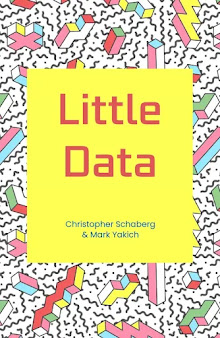Ian & I wrote the following paragraphs as part of our initial proposal materials for Object Lessons. I thought it might be helpful by way of further explaining the rationale behind the series.
--
These days, we usually think of “technology” as a synonym for new
innovations in industry—computers, mobile devices, and the Internet, of course,
but also energy consumption and resource management, logistics and transport,
and so forth.
But we could also understand technology as a much broader category,
one that includes almost anything that is made by someone (or something), or
that makes something else in turn. In addition to new marvels, technology also
encompasses much more mundane things. Some of the most influential and
widespread technologies go unnoticed and undiscussed.
For example, the rubber band, first invented in the mid-19th century,
remains a ubiquitous, viable device for holding things together. Plastic
garbage bags are lightweight and water-tight, thus making wet waste more easily
managed. Corrugated paper in the shape of cardboard boxes fly around the globe
carrying any number of consumable products, from the cheapest disposable toys
to the latest iPhones. The intermodal freight container makes it possible to
move goods by ship, rail, and truck, thus facilitating the global distribution
of all sorts of other objects—like garbage bags and rubber bands. Meanwhile,
crows gather bottle caps and sticks to construct and decorate nests in the tops
of basswood trees, whose own seedpods are shaped like sailplanes to better
disseminate across ice and snow in the winter.
In all of these cases, some material object transforms the world,
sometimes in obvious, immediate ways, other times in a more subtle fashion.
When we talk about technology today, we ought to think across scales,
eras, materials, even species. Marshall McLuhan gave the name “media” to
anything that influences or alters our perception and experience in the world.
Today, we might say that “technology” is an equivalent concept, but also an
even broader one: media and technologies are anything whatsoever that
influences the nature or experience of anything else—not just people, but also
animals, ecosystems, industries, and more.
This is the rationale behind Object Lessons, a regular series in The Atlantic’s
technology channel covering focused yet eccentric studies of singular objects
and the lessons they hold. Contributions will ordinarily be essays (2000 words on average), drawn from authors in industry, academia,
design, and beyond, written for a broad and general readership. The resulting
contributions will expand the scope of The Atlantic Tech, while also
opening the channel to a readership that might not think of themselves as “technology”
enthusiasts. At the same time, Object Lessons will also invite authors to
connect historical and natural things, or seemingly “untechnological” objects to today’s
technology culture.
While every Object Lessons essay will stand on its own, the column
will also serve as a testing ground for possible book-length projects (of roughly 25,000 words) for a corollary series published by Bloomsbury. Far from exhaustive studies or complete histories, we envision the Object Lessons books as intelligent and imaginative provocations, small books that are a pleasure to hold and read—books that leave the reader ruminating on whatever ordinary thing appears on the cover. They will be pithy, affordable, and beautifully designed books on a wide variety of things, written by authors from an equally wide range of fields and disciplines.














